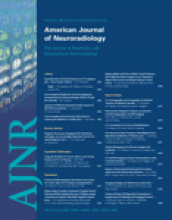Abstract
BACKGROUND: Intra-arterial therapies for acute ischemic stroke are increasingly available. Intravenous therapy (IV) followed immediately by intra-arterial therapy (IA) has been shown to be safe, but such therapy is resource intensive. Selecting the best patients for this therapy may be accomplished with the use of baseline neuroimaging.
METHODS: We used data from the IMS-1 and National Institute for Neurological Disorders and Stroke tissue plasminogen activator (tPA) stroke studies to compare outcomes among IV-IA tPA, IV-tPA, and placebo treatment stratified by the baseline CT scan appearance. The CT scans were scored using the Alberta Stroke Program Early CT (ASPECT) score and dichotomized into ASPECT score > 7 (favorable scan) and ASPECT score ≤ 7 (unfavorable scan). Logistic regression was used to assess for an ASPECT score by treatment interaction.
RESULTS: A total of 460 patients was included. Age and sex were similar among the 3 groups. The IV-IA tPA cohort had a higher median National Institutes of Health stroke scale (NIHSS) score (18 versus 17) compared with the IV tPA cohort. The proportion of patients with favorable CT scans (ASPECT score > 7) was lowest in the IV-IA tPA group. A multiplicative interaction effect was shown indicating that patients with an ASPECT score > 7 in the IV-IA cohort were more likely to have a good outcome compared with IV tPA and with placebo. Harm may accrue to patients treated with IV-IA therapy who have an unfavorable baseline CT scan appearance.
CONCLUSIONS: Patients with a favorable baseline CT scan appearance are the most likely to benefit from IV-IA therapy. This hypothesis will be tested in the IMS-3 study.
- Copyright © American Society of Neuroradiology












